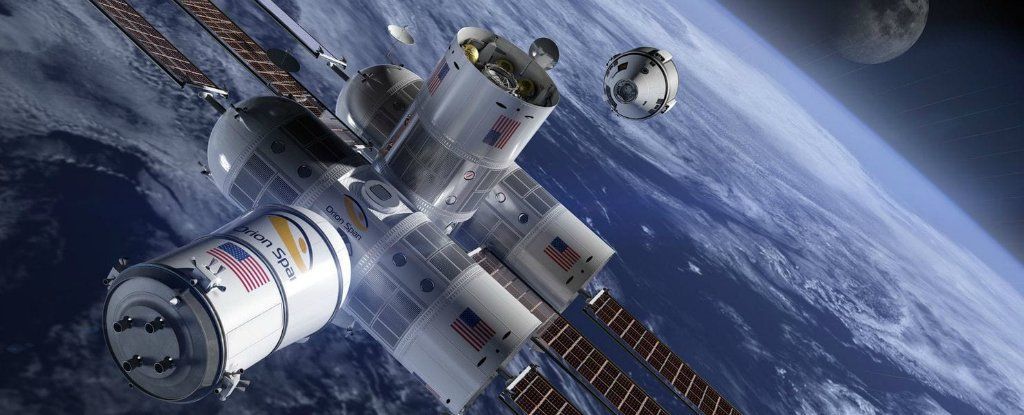The waning moon is in the predawn sky, busily passing planets. EarthSky community photos of the moon, Mars and Saturn, here.


384 sunsets in 12 days.
Looking for a getaway that offers unmatched views of sunrises and sunsets? Specifically, 384 of them in 12 days?
Try outer space.
Houston-based Orion Span hopes to launch the “first luxury hotel in space” — the 35-by-14-foot Aurora Station — by late 2021 and bring guests on board the following year.
For just $80,000, you can reserve a condo in space.
A team of research scientists recently conducted a series of simulations to see how the Orion Launch Abort System would fair in high speed conditions.
Pretty Scientific is a new Gizmodo series where we explore how the best images in science were created and why.
Three pillars of gas and dust sit among stars like towers of billowing smoke. It would take several years for light to cross from the top to the bottom of these dusty columns. This striking image from the Hubble Space Telescope remains, to this day, one of the most well-known astronomical images ever taken.
But if you were to peer at the Pillars of Creation, part of the Eagle Nebula, through your own telescope, you wouldn’t see the same thing. The images you typically see of outer space are colorized and processed in order to bring out the detail and highlight the most relevant parts for scientific study. The popularity of the Pillars of Creation may have forever changed how astronomers present images of space to the public.
The plan to launch the module into space, and take reservations from customers for multimillion-dollar trips, was announced today at the Space 2.0 Summit in San Jose, Calif.
Orion Span says its hotel habitat, dubbed Aurora Station, will be about the size of a large private jet’s cabin, with 5,650 cubic feet of pressurized space. It’ll accommodate up to six residents at a time, including two professional crew members.
The flight plan calls for the module to be launched into a 200-mile-high orbit in late 2021, and host its first guests in 2022.


We are changing space itself.
In 2017, NASA space probes detected a massive, human-made ‘barrier’ surrounding Earth.
And tests have confirmed that it’s actually having an effect on space weather far beyond our planet’s atmosphere.
That means we’re not just changing Earth so severely, scientists are calling for a whole new geological epoch to be named after us — our activities have been changing space too.
